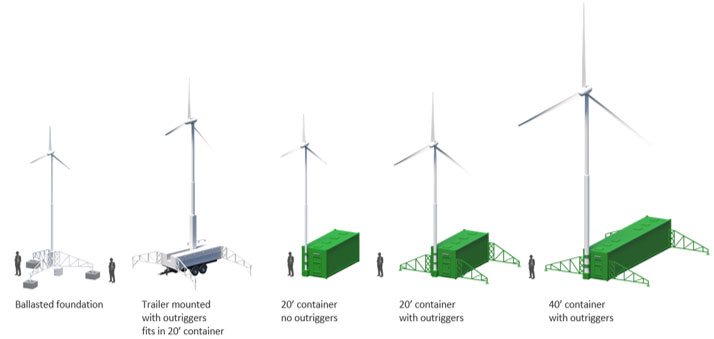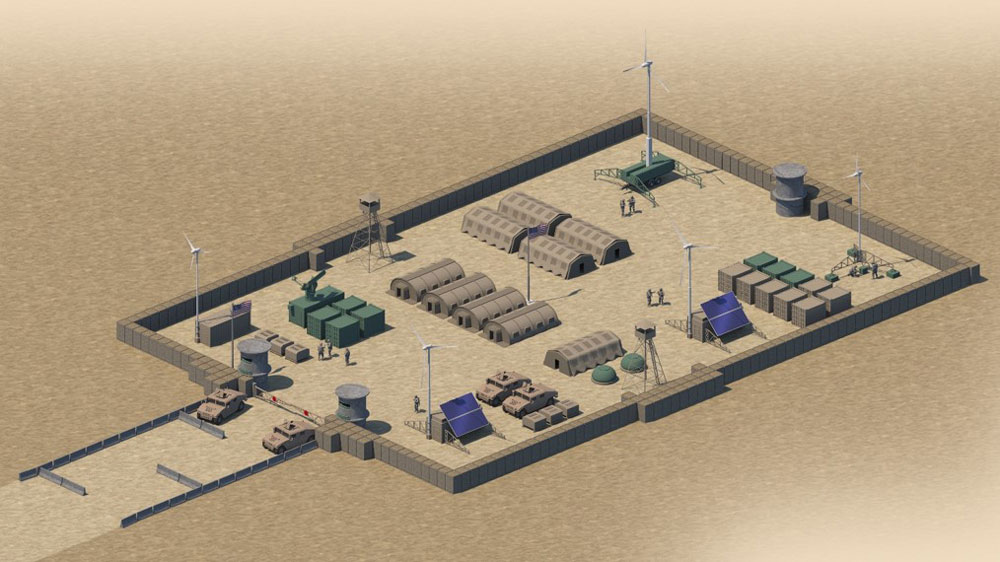Researchers bridge gap between industry design and US military needs

Sandia researchers have devised a new set of design guidelines and procurement specifications that help the wind energy industry and the U.S. military develop and evaluate rapidly deployable wind energy systems for use in defense and disaster-response applications.
The Defense and Disaster Deployable Turbine, or D3T, project was funded by DOE’s Wind Energy Technologies Office to assess the potential market for deployable wind systems, define the design guidelines for these systems and facilitate engagement between the wind energy industry and the military.
“This project helped fill the gaps within this space,” said Brian Naughton, the principal investigator for the project. “Industry always wanted to know if there was interest in the design of such a system — ‘What does the military want and need?’ — and the military always wanted to know what industry could design and build. It really was a case of the chicken or the egg. This new set of guidelines bridged the gap between the two parties and helped to facilitate informed conversations.”
Brian said project work took place in a variety of arenas versus a typical lab or research facility. Content for the guidelines was gleaned through numerous defense and energy conferences. After interviewing industry and military stakeholders, he shared preliminary findings with the stakeholders and gathered feedback through emails, newsletters, reports and presentations at wind energy associations, like the Distributed Wind Energy Association and the Defense TechConnect Innovation Summit & Expo.
“Before [the development of] these guidelines, there really were no public resources to study what deployment and application of such a system might look like,” Brian said. “Instead of a smaller company investing six months of time and designing a system that the military doesn’t need, [the company] can now review three years of distilled data to assist in facilitating and accelerating its product.”
For instance, Brian said design criteria differ in a deployable wind system from those of commercial wind turbines. Deployable wind systems must be easy to transport, able to operate in nearly any environment worldwide and simple to set up and break down.
“This is the complete reverse of how the wind industry traditionally designs products,” Brian said. “The guidelines recommend [that] both industry and the military consider these key differences.”
The project benefited from deep experience in wind energy and military energy knowledge across the national laboratory enterprise. Within Sandia, researchers Tammy Brown and Sam Gilletly adapted tools and analyses developed by the military and energy systems analysis team, managed by Alan Nanco, to evaluate deployable wind systems in a military operations scenario. Beyond Sandia, project partners at the National Renewable Energy Laboratory and Idaho National Laboratory brought expertise in small wind systems, as well as in military microgrid design and testing experience.
Next steps for the Defense and Disaster Deployable Turbine project may include analysis-based work, Brian said, such as research proposals to test hardware. A related project led by Idaho National Laboratory in partnership with Uprise Energy is developing innovative, mobile renewable-energy systems for distributed microgrid applications. This project offers a glimpse at what portable renewable-energy systems might look like, he said.
Brian is often asked if solar energy would be a better choice than wind energy in deployment and disaster-response situations.
“What we’re finding is that a better question to ask might be, why not both wind and solar?” he said. “Hybrid wind and solar systems have been found to perform better than either type of system on its own.”

Learn more about Sandia’s Wind Energy program.